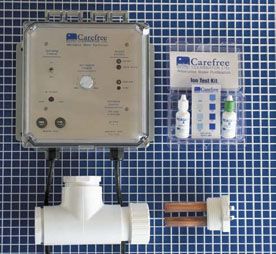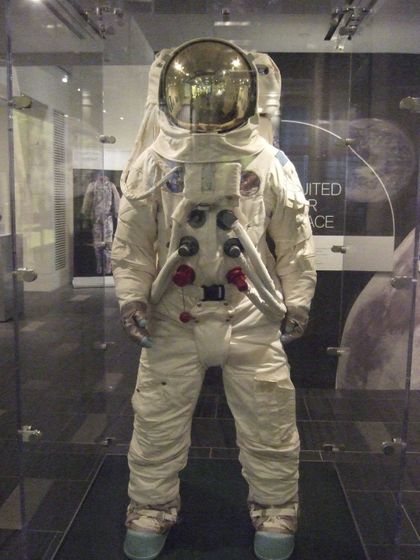What are the 'four innovative technologies' created by the Apollo Project?

By
On July 20, 1969, Apollo 11 was the first to strike humanity on a planet other than Earth. However, the spacecraft that finally visits the moon in Apollo 1972 in 1972 do not appear, and the ' Apollo Project ' has become a legend. The science and technology used for such an Apollo program can be said to be the culmination of those days, and there are many products that use the technology of the Apollo program even today.
Four surprising technological innovations that came out of the Apollo moon landings
https://theconversation.com/four-surprising-technological-innovations-that-came-out-of-the-apollo-moon-landings-119605
◆ 1: Water purification system
A small, lightweight water purification unit developed by NASA releases copper and silver ions into water to kill bacteria, and various pathogens such as Escherichia coli, Pseudomonas aeruginosa , Legionella , Staphylococcus , Streptococcus , Salmonella, etc. Was effective against Prior to this invention, disinfection with chlorine was the mainstream, but chlorine was weak to sunlight and heat and had low certainty.
The water purifier using the water purification system invented by NASA looks like this.

The water purification system is still used in
◆ 2: Oxygen mask
An oxygen mask, as used by firefighters around the world, is the result of NASA improvements. The oxygen mask used by firefighters in 1971 weighs about 30 kg when all the equipment is combined. NASA teamed up with the National Fire Research Institute of America to improve oxygen masks by making use of development know-how for astronauts. The weight of the new oxygen mask is about one-third less than the original weight, about 9 kg, and it is easy to wear, and the face mask has a wider field of view than the conventional one. As a result of the new oxygen mask being deployed at fire stations all over the United States, it seems that fire injury rate by inhalation when using oxygen mask decreased dramatically.

By
◆ 3: Polymer fiber
A polymer is a compound in which multiple molecules are polymerized in a chain, and tends to have excellent toughness and heat resistance. American chemist Carl Marvel developed by ' polybenzimidazole (PBI)' that polymer fibers has both productivity and heat resistance, Apollo 1 exits the dead command ship is destroyed three by fire Was what NASA was looking for. In the 1970s, NASA used PBI to complete space suits, and many astronauts who participated in the Apollo Project and Skylab Project continued to use PBI-made space suits.

Starting in the 1980s, fire departments will use PBI for firefighting suits. Even nowadays, PBI is used in
◆ 4: Cordless power tool
The world's first cordless power tool was developed by Black & Decker in 1961, and one of Lockheed Martin's predecessors, aircraft manufacturer Martin Marietta partnered with Black & Decker to design the NASA 'Space Tool' . Martin Marietta and Black & Decker have created impact wrenches that can be used in zero-gravity spaces as well as cordless hammer drills that were used to bring back the ' moon stone '.

Black & Decker is still developing home, medical and industrial cordless devices, making use of its experience in developing space drills.
Furthermore, as a result of NASA's scientific and technological capabilities being raised to a legendary level by the Apollo Project, various items are said to have been 'made by NASA.' The Conversation “The Teflon and Velcro seem to be NASA, but the Teflon was invented in 1938 by a scientist who was developing a new refrigerant by Roy Planket , and Velcro was Swiss technology in 1940. It was created by the designer George de Mestral . '
Amazon.com: Watch First Man (Subtitled Version) | Prime Video

Related Posts:







